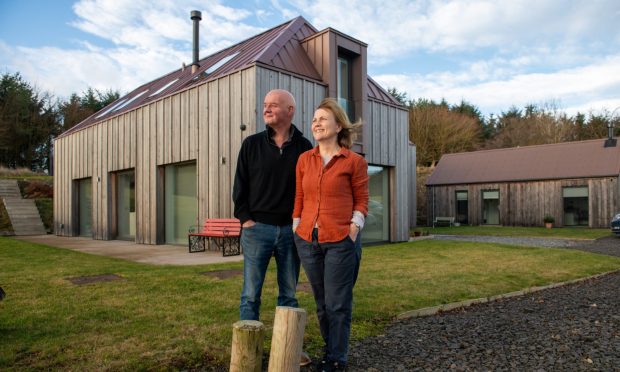When a friend sent plant lover Alison Goldie a fuchsia catalogue, she found an offer for six auriculas on the back page and, attracted by their vibrant colours and old-fashioned charm, she and husband Mark decided to order some.
Before long the former fuchsia fanciers were hooked. They looked even better ‘in the flesh’ and we became addicted,” smiles Alison, who has been passionate about horticulture ever since she acquired her first garden back in 1987. In fact, when it comes to all things plant, she really knows her onions – after qualifying with an HNC at Angus College, she went on to gain a BSc in botany
while Mark, whom Alison met at college, became a professional gardener.
So far so good, but fast forward a few years later when Alison finished her PhD in molecular biology. The research funding was reduced so the part time job Alison had been offered was no more.
“I was wondering what on earth to do next with my life and it was at this point that I was saved by the auricula,” says Alison. “I now had the time to concentrate fully on growing and propagating the auriculas, which I couldn’t have done properly if I’d been working.”
Mark and Alison, who live in Brechin, realised there was a real interest in auriculas and The Scottish Auricula & Primula Society was founded in January 2014.
The auricula is a member of the Primulacae family, which includes polyanthus, primrose, candelabra and auricula. The modern auricula is descended from a natural cross between Primula auricula (P. ursi ‘Bear’s Ears’) and P. hirsute. Both types of primulas are found growing near each other in adjoining lime and acid soils in the mountains of Europe like the Swiss Alps and the Dolomites in northern Italy.
“Tradition has it that the auricula was introduced into Britain by Flemish weavers fleeing from the Continent in the early 16th Century,” says Alison.
“A more likely explanation is that the auricula arrived by swapping plants between continental and English gardeners.”
A true heritage plant, it was once valued for its medicinal properties the auricula is mentioned in Gerarde’s ‘Herball’ (1597), the leaves being used to stop bleeding by contracting the blood vessels.
Herbalists also believed that the auricula would be useful for “strengthening the head when at height”, giving the plant one of its first nicknames from German speaking areas of “the giddiness plant.”
By establishing a 21st Century auricula society – which has 43 members who come from Scotland, Northern Ireland, England, Wales, Sweden and France – Mark and Alison have tapped into the flower’s Scottish roots: back in 1887 a meeting was called in Scotland for anyone interested in growing auriculas and as a result regular exhibitions were held, including three at the city assembly rooms in Dundee. But after May 7 1892 the society seems to have faded into obscurity.
As well as running Angusplants, an auricula nursery, the Goldies have about 500 different varieties in all, including a Plant Heritage National Plant Collection of alpine Primula auricula.
So what is it about these plants that stirs such passion in Mark and Alison?
“When flowering they are like a myriad of gems, in every colour of the rainbow,” enthuses Alison, waxing lyrical. “When looked at singly, it looks as if the colour has been painted on soft velvet. No wonder the Victorians called them Painted Ladies,” she smiles.
The Goldies spend much of their spare time promoting the plants, giving talks and sharing their enthusiasm.
“And every year we open the garden for charity under Scotland’s Gardens, and showcase the auriculas, as well as holding an annual show – the next one is on May 20 in Auchterarder Community Church Centre,” says Alison.
With their Alpine heritage, auriculas thrive in the Scottish climate, although, says Alison, the recent milder winters have meant the plants can’t “rest” as they would like.
“They prefer as much cold as can be thrown at them!” she laughs before offering some tips for getting the best out of the plants.
“They benefit from being propagated (split) each year, after flowering, with each ‘rosette’ being potted up into a three-inch (or less) pot in multi-purpose compost,” she suggests. “A weak feed – tomato food or similar – should be given weekly when they start into growth around March. Then sit back and watch.”
The Auricula and Primula Show will take place at Auchterarder Community Church Centre on May 20, 12-2.30pm, with plant sales and refreshments from 10am. Free admission.
www.thescottishauriculaandprimulasociety.com














